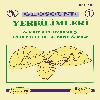Kentsel Sorunların Yönetimi için Bir Gönüllü Coğrafi Bilgi Mobil Uygulaması Geliştirilmesi
Gönüllü Coğrafi Bilgi (GCB), Mobil Uygulama, Sosyal Medya, Sivil Bilim, Kentsel Sorunlar
___
- Anbaroğlu, B., (2017). Gönüllü Coğrafi Bilgi: Mekânsal Bilişim Çalışmalarına Web 2.0 Devrinde Yeni Bir Yaklaşım, Harita Dergisi, 158, 1-9.
- Arsanjani, J. J., Helbich, M., Bakillah, M., Hagenauer, J., Zipf, A., (2013). Toward mapping land-use patterns from volunteered geographic information, International Journal of Geographical Information Science, 2264-2278.
- Banger, G. ve Çalışır, G., (2014). Sosyal Medyanın Kurumsal İnovasyon İçin Kitle Kaynak Olarak Kullanımı, Uluslararası Yeni Medya – Yeni Yaklaşımlar Konferansı, Çanakkale Onsekiz Mart Üniversitesi. Çanakkale, Türkiye.
- Brown, G., Kelly, M. ve Whitall, D., (2013). Which ‘public’? Sampling effects in public participation GIS (PPGIS) and volunteered geographic information (VGI) systems for public lands management, Journal of Environmental Planning and Management, 57 (2), 190-214.
- Dorn, H., Törnros, T. ve Zipf, A., (2015). Quality Evaluation of VGI Using Authoritative Data - A Comparison with Land Use Data in Southern Germany, ISPRS International Journal of Geo-Information, 4, 1657-1671.
- Elwood, S., Goodchild, M.F., Sui, D.Z., (2012). Researching Volunteered Geographic Information: Spatial Data, Geographic Research, and New Social Practice, Annals of the Association of American Geographers, 102(3), 571-590. Fonte, C. C., Bastin, L., See, L., Foody, G., Lupia, F., (2015). Usability of VGI for validation of land cover maps, International Journal of Geographical Information Science, 1269-1291.
- Goodchild M.F., (2007). Citizens as sensors: the world of volunteered geography, GeoJournal, 69:211-221.
- Goodchild M.F. ve Li L., (2012). Assuring the quality of volunteered geographic information, Spatial Statistics, 110-120.
- Griffin, G. P. ve Jiao, J., (2015). Where does bicycling for health happen? Analysing volunteered geographic information through place and plexus, Journal of Transport & Health, 2/2, 238-247.
- Gulnerman A. G., Goksel C., Tezer A., (2017). Disaster Capacity Building With A GIS Tool Of Public Participation, Fresenius Enviromental Bulletin, 26, 1, 237-243.
- Hagenauer, J. ve Helbich, M., (2012). Mining urban land-use patterns from volunteered geographic information by means of genetic algorithms and artificial neural networks, International Journal of Geographical Information Science, 26 (6), 963-982.
- Harris, T. M., (2012). Interfacing archaeology and the world of citizen sensors: exploring the impact of neogeography and volunteered geographic information on an authenticated archaeology, World Archaeology, 44:4, 580-591.
- Haworth, B. ve Bruce, E., (2015). A Review of Volunteered Geographic Information for Disaster Management, Geography Compass, 9/5, 237-250.
- Haworth, B., (2016). Emergency management perspectives on volunteered geographic information: Opportunities, challenges and change, Computers, Enviroment and Urban Systems, 57, 189-198.
- Mooney, P., Corcoran, P., Ciepluch, B., (2012). The potential for using volunteered geographic information in pervasive health computing applications, Journal of Ambient Intelligence and Humanized Computing, 4 (6), 731-745.
- Poorazizi M. E., Hunter J. S. A., Steiniger S., (2015). A Volunteered Geographic Information Framework to Enable Bottom-Up Disaster Management Platforms, ISPRS International Journal Of Geo-Information, 4, 1389-1422.
- Rahmetizadeh, S., Rajabifard, A., Kalantari, M., (2016). A conceptual framework for utilising VGI in land administration, Land Use Policy,56, 81-89.
- See L., Mooney P., Foody G., Bastin L., Comber A., Estima J., Fritz S., Kerle N., Jiang B., Laakso M., Liu H., Milcinski G., Niksic M., Painho M., Podör A., Olteanu-Raimond A., Rutzinger M., (2016). Crowdsourcing, Citizen Science or Volunteered Geographic Information? The Current State of Crowdsourced Geographic Information, ISPRS International Journal of Geo-Information, 5, 55.
- Seeger C., (2008). The Role of Facilitated Volunteered Geographic Information in the Landscape Planning and Site Design Process. GeoJournal, 72(3): 199–213.
- Siriba, D. N. Ve Dalyot, S., (2017). Adoption of volunteered geographic information into the formal land administration system in Kenya, Land Use Policy, 63, 279-287.
- Tang, Z. ve Liu, T., (2015). Evaluating Internet-based public participation GIS (PPGIS) and volunteered geographic information (VGI) in environmental planning and management, Journal of Environmental Planning and Management, 1073-1090.
- Yagoup, M.M., (2015). Public Perception on Disaster Management Using Volunteered Geographic Information (VGI): Case of UAE, Joint International Geoinformation Conference 2015, Kuala Lumpur, Malaysia, ISPRS Annals of the Photogrammetry, Remote Sensing and Spatial Information Sciences, Volume II-2/W2.
- Werts J. D., Mikhailova E. A., Post C. J., Sharp J. L., (2012). An Integrated WebGIS Framework for Volunteered Geographic Information and Social Media in Soil and Water Conservation, Environmental Management, 49, 816-832.
- (URL 1). https://en.0wikipedia.org/index.php?q=aHR0cHM6Ly9lbi53aWtpcGVkaWEub3JnL3dpa2kvSU9T, [Ziyaret Tarihi: 20 Ekim 2017].
- (URL 2). https://www.idc.com/promo/smartphone-market-share/os, [Erişim Tarihi: 20 Ekim 2017].
- Yayın Aralığı: Yılda 3 Sayı
- Başlangıç: 2016
- Yayıncı: Murat yakar
2016 Yılı 6 Mw ≥ 7.0 Depremin İyonküre Değişimlerinin İncelenmesi
Erman ŞENTÜRK, Murat Selim ÇEPNİ
İki Boyutlu Bazı Datum Dönüşüm Yöntemlerinin İncelenmesi
Mustafa HÜSREVOĞLU, Ekrem TUŞAT
Güneş Enerji Santrali (GES) Geliştirme: Uşak Örneği
Üç Boyutlu Kent Modellerinde Ayrıntı Düzeyi Kavramı İnce Minareli Medrese (Konya) Örneği
Fırat URAY, Abdullah VARLIK, Azim METİN
Kentsel Sorunların Yönetimi için Bir Gönüllü Coğrafi Bilgi Mobil Uygulaması Geliştirilmesi
Bülent BOSTANCI, Talha TAŞKANAT, Erkan BEŞDOK, Abdullah KARAAĞAÇ
ÜÇ BOYUTLU KENT MODELLERİNDE AYRINTI DÜZEYİ KAVRAMI İNCE MİNARELİ MEDRESE (KONYA) ÖRNEĞİ
Fırat URAY, Abdullah VARLIK, Azim METİN
Kümeleme Analizi Sonuçlarının Tematik Haritalar ile Görselleştirilmesi
İbrahim Öztuğ BİLDİRİCİ, Nurbanu Afacan AFACAN
Uydu Konum Belirleme Sistemlerindeki (GNSS) Güncel Durum ve Son Gelişmeler
